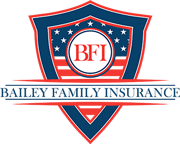Why is My Workers Compensation so Expensive?

Workers Comp starts out as a fairly simple formula. Your payroll times the rates equal your premium.
Where do rates come from? They come from the Workers Comp Insurance Rating Bureau (www.wcirb.com), a private non-profit association that collects data on workers comp claims and determines what it should cost, as a percentage of payroll, to pay for said claims. Every year (and sometimes mid-year) they publish the “Pure Premium” rate for each classification of employee for every industry (there are about 700 different classes) – which the Insurance Commissioner must approve of – that the insurance companies use to determine how they will establish their rates. Kind of like how the prime rate is to lenders so is the Pure Premium rate to insurance companies.
Rates are the biggest driver in the cost of your worker’s comp insurance. The more injuries employees in your class of business get, the higher your Pure Premium rate will be. As you can expect, riskier businesses like construction and agriculture tend to have higher rates than the low-risk ones like office workers and salespeople. Also, rates tend to trend upwards because employee injuries tend to get more expensive to treat every year.
Are there steps that I can take to lower my Work Comp Premium?
Your business has little control over the loss experience of your industry or the rates assigned to your classifications. Nevertheless, you can work to reduce your premiums by taking steps to lower your modifier.
Make Safety a First Priority
By maintaining a safe workplace, both on and off your premises, you can help reduce worker injuries. If possible, the budget for an outside safety evaluation and implement the changes suggested. Mandate employee safety training. Because your modifier is multiple in the premium calculation equation, a small reduction may result in significant savings.
Establish a Return to Work Program
A return-to-work program can help retain valuable workers while reducing the cost of workers’ compensation claims. The program is designed to return injured workers to the workplace as soon as they are medically able.
Review Your Classifications
Many businesses are improperly classified on their workers’ compensation policies. Classification errors can be costly. For example, suppose your executive assistant is classified as a carpenter since she is employed by your construction company.
The workers’ compensation rate for a carpenter will be much higher than the rate for a clerical worker. If you think your firm has been assigned the wrong classifications, ask your insurance agent or broker to review them. You can also request a classification inspection from the NCCI or your state rating bureau.
Review Payroll Figures
Workers’ compensation premiums are based on projections of your payroll for the current policy period. If the projections are too high, your premium will be higher than it should be. Your premium will be adjusted when your policy is audited, but the audit may not take place until months after your policy has expired. You don’t need to wait. Ask your insurer to adjust your payrolls now.
Watch these short videos to hear more answers to FAQ’s: https://www.baileyfamilyinsurance.com/faq/
Call / Text us with any questions!
